Treatment and prevention of cucumber root rot in a greenhouse
Root rot of cucumbers often occurs in the greenhouse when the temperature and humidity drop above 80%. The disease is more common in adult plants. Lack of treatment threatens the death of half of all plantings, which leads to a significant loss of yield. If root rot affects young seedlings, up to 80% of the seedlings can be lost. In addition to external factors, errors in care can lead to illness. If signs of root rot are found, treatment should be started immediately. As a preventive measure, the observance of agricultural techniques for growing crops and the acquisition of resistant varieties are used.
Causes of root rot
The disease is fungal in nature. Unfavorable growing conditions contribute to the fact that the fungus infects the plant. As a result, cucumbers have reduced immunity, they cannot resist diseases. The negative factors that often lead to the appearance of root rot are:
- sudden changes in temperature during the day;
- prolonged cold snap;
- lack of lighting;
- excessive soil irrigation;
- watering with cold water.
Under the influence of these reasons, the weakening of the root system occurs, which facilitates the penetration of the fungus into the root tissues. In addition, soil salinity contributes to this. Dry areas appear on the root system. It is here that pathogenic microorganisms first settle, and then spread to healthy tissue. The normal functioning of the roots is disrupted, which causes changes in the appearance of the plant. The earlier the infection occurred, the longer the affected specimen remained untreated, the more likely the bush would die. Even if fruits have time to set on it, they will be underdeveloped, twisted.
Severe symptoms of the disease
At first, the disease proceeds in a latent form and does not have pronounced manifestations. Then the leaves begin to droop towards the end of the day, and overnight their turgor is restored. During this period, the process of root damage occurs in the initial stage, and the plant is still partially able to absorb moisture.
Such symptoms persist for a certain time, until the roots are completely affected. In the active stage of the disease, the vegetative part of the plant begins to sorely lack moisture, and the wilting of the leaves becomes widespread. By the morning, the leaf plates are no longer restored.
The leaves begin to turn yellow and then dry out completely. You can diagnose root rot by digging up the plant and examining its roots. As a rule, in diseased specimens at the initial stage of the development of the disease, all roots are covered with brown or reddish spots. With severe damage, the roots become rotten and darken.
Inexperienced gardeners may confuse root rot with fusarium, which also causes leaves to wilt. However, with fusarium disease, it is not the roots that are affected, but the vascular system of the cucumber. The defeat of the vessels occurs in the lower part of the stem, and upon close examination, a characteristic constriction can be noticed in this place.
How to treat sick cucumbers?
Sick cucumbers can be saved only at an early stage of the disease, when only a few leaves have withered on the bushes. In this case, it is recommended to add soil to the root zone so that the plants can form additional roots. All garters are removed from the stem, tilted to the ground and sprinkled with soil in the lower part. Then watering is carried out.The bush must be tied up again, fixing it in such a position that it does not straighten. After 1.5-2 weeks, the plant will form a new root system, which will allow it to continue growing.
Folk remedies
Proponents of organic farming oppose the use of chemicals in growing plants. They can recommend alternative methods of treatment:
- Using milk whey. The product is an acidic environment that is unfavorable for the development of fungal spores. To prepare a working solution, add 1 liter of whey and 30-40 drops of iodine to a bucket of water to enhance the effectiveness of the composition. Mix the mixture thoroughly. After that, the solution is used to spray the foliage of cucumbers and water the soil in the root zone.
- Application of brilliant green solution. In its composition, the drug contains a certain amount of copper, which is successfully used in the treatment of fungal diseases. Due to the low concentration of this element, brilliant green is used rather for preventive purposes, watering cucumbers with a solution when unfavorable conditions occur. Consumption of the substance - 1 drop per liter of water. Before watering the plants with a folk remedy, gently loosen the ground in the root zone.
- Watering cucumbers with baking soda solution. For cooking, use 2 tbsp. tablespoons of soda in a bucket of water. The solution is mixed and applied under the root of diseased plants. Pre-pour cucumbers with warm water.
All these funds are inexpensive and are in the arsenal of any hostess. Treatments are carried out several times at short intervals (5-7 days). The onset of positive changes can be judged by the appearance of the cucumbers.
Chemicals
Antifungal chemicals are suitable for the treatment of root rot in cucumbers. The sooner measures are taken, the greater the chances of preserving the plants, and hence the harvest. List of suitable fungicides:
- Previkur Energy. Combined systemic drug based on fosetyl and propamocarb. It inhibits the growth of fungal spores and prevents their germination. The working solution is prepared from 15 ml of fungicide per 10 water. For processing 1 sq. meter of surface consumes 2 liters of composition. The remedy works well in the early stages of root rot. The preparation is applied to wet soil. Can be used for preventive treatment at the stage of seedling rooting.
- "Glyocladin". Biological fungicide used to treat and prevent fungal diseases. Incompatible with other pesticides, as it is developed on the basis of the beneficial fungus Trichoderma. The drug improves the microbiological composition of the soil in a short time. Safe for plants and humans, suitable for use in the fruiting stage. "Glyocladin" is produced in the form of tablets, which can be placed under the root or used to prepare a solution according to the instructions. Activity decreases in acidic soil.
- Fundazol. The drug belongs to the group of chemical fungicides. The product is safe for plants, but toxic to humans and animals. To prepare the solution, use 5 g of the drug per 5 liters of water. Can be used for spraying and root watering. "Fundazol" is quickly absorbed by plant tissues. It is often effective when other fungicidal preparations are weak.
- Fitosporin. A systemic biological product based on hay bacillus. It can be used prophylactically and for the treatment of fungal diseases. To prepare the working solution, use 5 g of the drug per 10 liters of water. The fungicide penetrates the plant tissues and acts from the inside at the cellular level. The finished composition is sprayed with cucumber leaves and watered bushes under the root.
When using chemicals, it is necessary to use protective equipment in the form of a mask, gloves, closed clothing.Processing of cucumbers in the greenhouse is carried out 2 to 4 times. It is advisable to alternate fungicides for maximum effect.
Preventive measures
To prevent the appearance of root rot, simple agricultural techniques will help. The main thing is that these events must be carried out consistently and regularly:
- replace the top layer of earth 8-10 cm thick with fresh soil annually;
- before planting cucumbers in the greenhouse, spill the soil with Fitosporin solution;
- maintain the correct irrigation regime (without waterlogging);
- periodically gently loosen the soil in the root zone;
- maintain a stable temperature inside the greenhouse;
- once every few days, inspect plants for symptoms of diseases;
- bushes with an advanced stage of the disease should be removed outside the greenhouse and burned.
To prevent cucumbers from being affected by root rot, you need to choose varieties that are resistant to this disease. This quality is usually possessed by hybrids in the first generation. Among them are Benefis, Valdai, Orlik, Maisky, Gypsy, Advance.
Cucumber root rot poses a direct threat to the upcoming harvest, therefore, they require urgent action when the initial symptoms of the disease appear. An even more correct solution would be to adhere to agricultural cultivation techniques, which prevents the development of fungal infections.
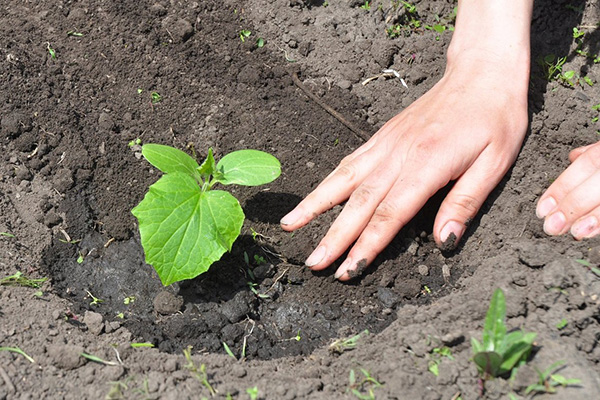

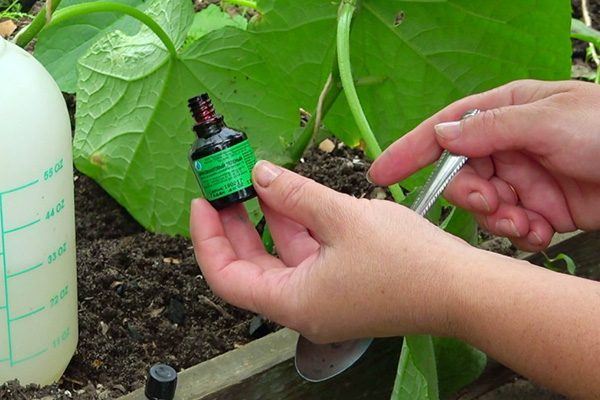
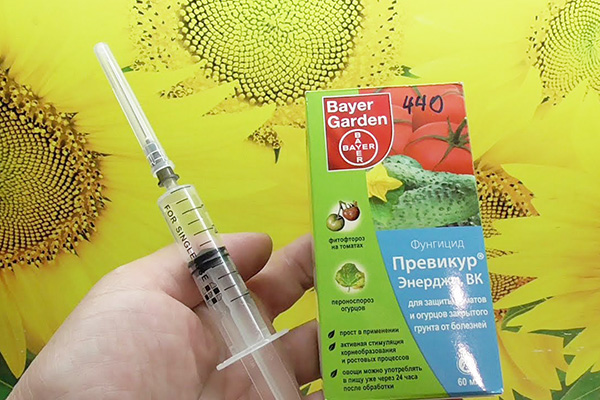
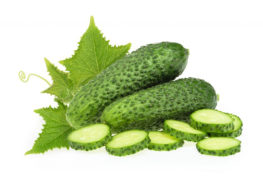
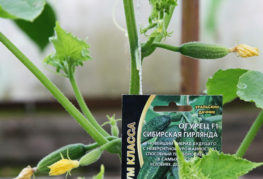
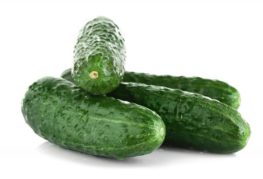
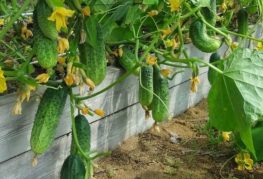

and will be published shortly.